Chatbots are computer programs that simulate human conversation. They interact with us via messaging applications, or text, or speech.
Chances are you may have already interacted with a chatbot at some point. Of course chatbots have a number of distinct advantages as a method of communicating with your customers:
- They’re available 24 hours a day
- No training required for users to interact with them, and no learning curve
- They give quick answers to simple questions
- They will patiently answer predictable routine questions
- They are useful for guiding customers through routine processes
- They can forward queries onto the relevant human when appropriate
- They can boost productivity of your skilled team members by removing routine interruptions
By definition the chatbot has quite limited capabilities. It isn’t having a real “conversation” with us, but instead is following a set of rules or instructions. The chatbot might be following a defined script, or it might accept questions in free form text, and it could be integrating artificial intelligence. But the chatbot is usually restricted to one single domain of knowledge, such a finding information about flights, or ordering taxis, or giving information about a limited range of products and services.
And the chatbot can be implemented on one of a range of platforms, including Messenger, or SMS text messaging, or Skype, or Slack. You are also interacting with a chatbot when using a voice activated system like Siri or Amazon Echo or Ring.
I’ve been looking at lots of chatbots, from Heston Blumenthal’s Skype based cookery bot to the Transport for London’s timetable bot, and I have to say it has been quite a mixed bag in terms of the bots being useful or an interesting experience.
But I have picked out 5 bots that I think are worth you taking a look at. Get some inspiration, have a think about how your own business could use chatbots, and how the conversational experience is developing in the digital space.
1. Bing’s Search Engine Results Chatbot
The Bing search engine has introduced some chatbots into it’s local search results, with pilots running for local restaurants like Monsoon in the state of Washington, USA.
The Monsoon restaurant chatbot surfaces in Bing’s local search results: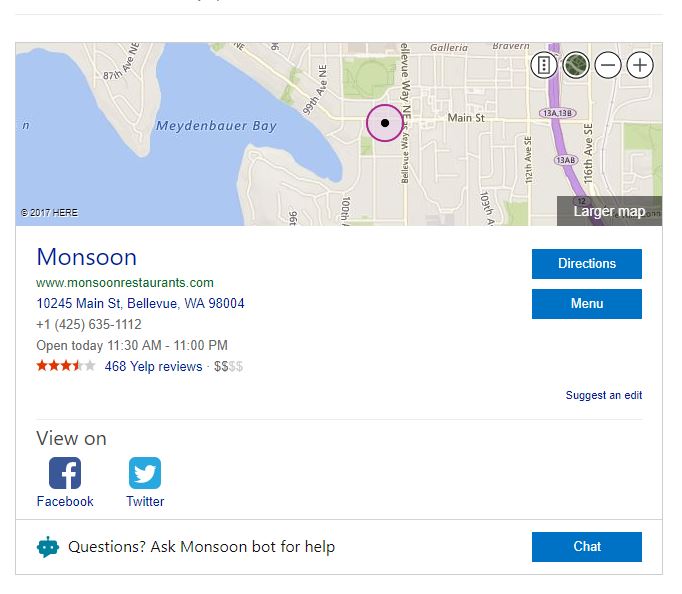
Powered by Skype, the restaurant’s chatbot can answer a range of questions for customers interested in learning more the menus, or locations, or prices.
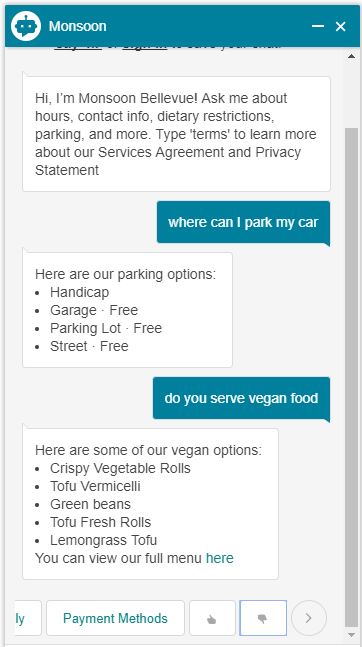
Top learnings from this restauant chatbot
- The chatbots prominent visibilitity right in the Bing search results will drive engagement
- It is designed to answer a highly specific and predictable set of questions restaurant guests will typically ask (FAQs)
- It will benefit the restaurant by reducing phone calls asking routine questions
- A chatbot of this nature is quick to deploy from existing content
2. Marriott’s Recruitment Chatbot
The global hospitality chain, Marriott International, has recently launched a Facebook Messenger chatbot called “Marriott Careers” to help job seekers looking for roles with their business.
By guiding users through a series of structured questions (“Where are you looking for a job?” Are you willing to relocate?”) and using well designed conversational language, Marriott has created a powerful, personalised user experience that will certainly give them competitive advantage in attracting talent.
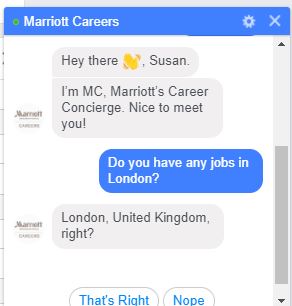
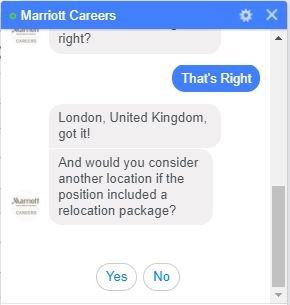
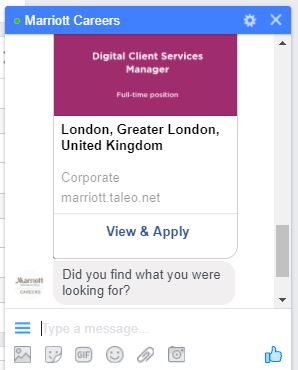
Top learnings from this recruitment chatbot
- Chatbots are a powerful tool for demonstrating the innovative culture within an organisation
- Chatbots can leverage the structured data assets that your business already is making use of
- The chatbot can be programmed to reflect your company’s values and ethos, using language to convey messages in a fun and personal way
- The chatbot has the ability to record personalisation information, and deliver personalised results on an ongoing basis
3. Winnie: a chatbot to help with web hosting decisions
Here’s an example of a B2B chatbot designed built on Facebook Messenger that helps with the tricky decision of where to host your website. Winnie was created by Website Hosting Insider to lead business owners thru the process of selecting the most appropriate web hosting package.
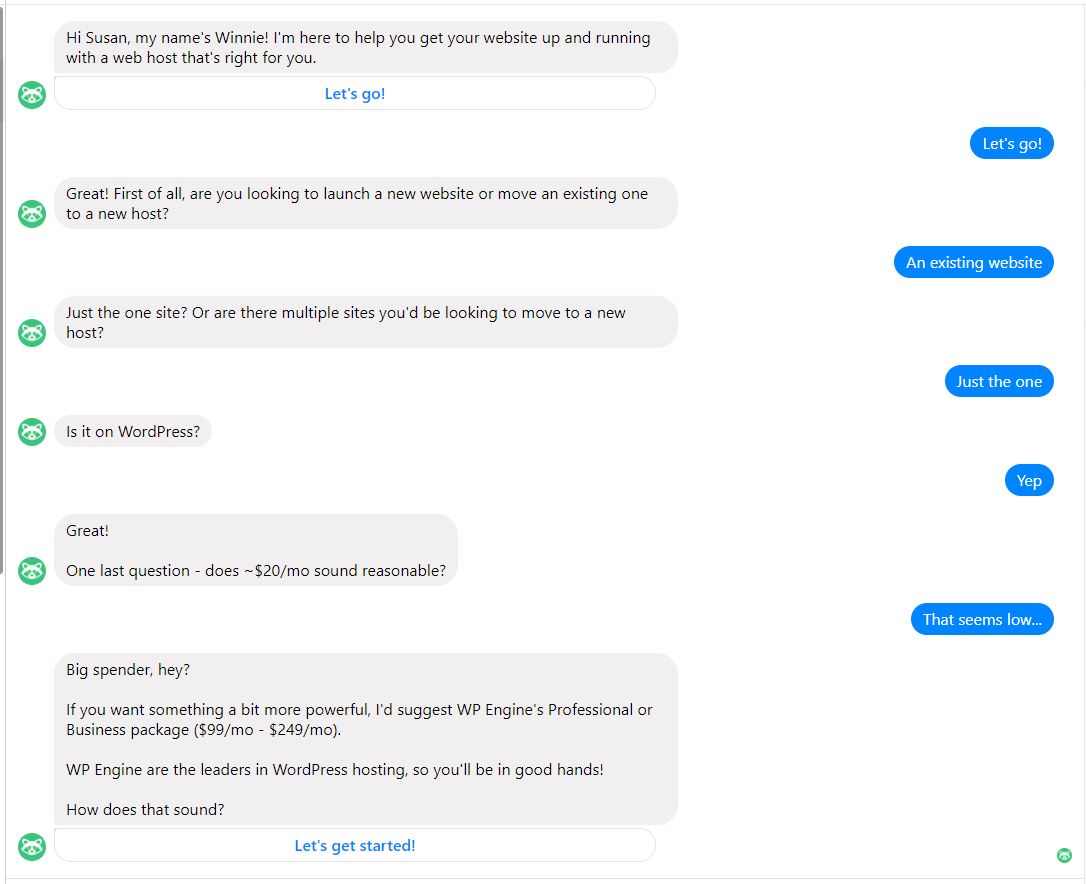
But the chatbot isn’t only trying to sell the WP Engine package for WordPress users. By trying another search, I am led down a different path suited to a quite wildly different set of requirements:
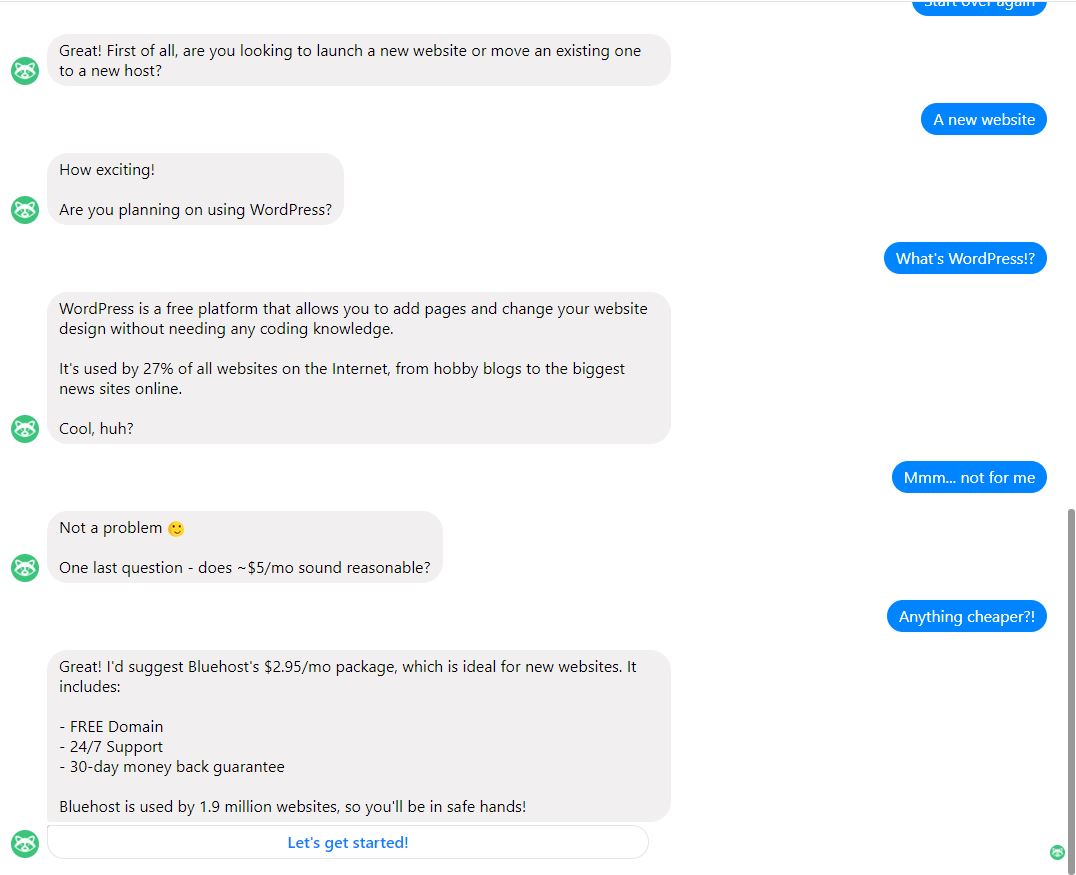
Top learnings from this service provider’s chatbot
- The chatbot addresses a specific gap in the market that the business knows is a good revenue generating opportunity
- It follows a highly structured path, leading users logically through the decision making process
- The chatbot focuses on a finite set of services with sufficient breadth to be able to add real value
- And it fully integrates into the site where the next step, or call to action, leads
4. Sgt Star: the US Army’s chatbot
Sgt Star is a multi million pound chatbot project that is currently answering more than 1500 questions per day from candidates interested in joining the US Army.
It’s described as the Army’s virtual guide, here to answer any questions you may have. And to answer the fast.
You can see the preparation that went into creating the responses Sgt Star is capable of providing in this 300 page PDF
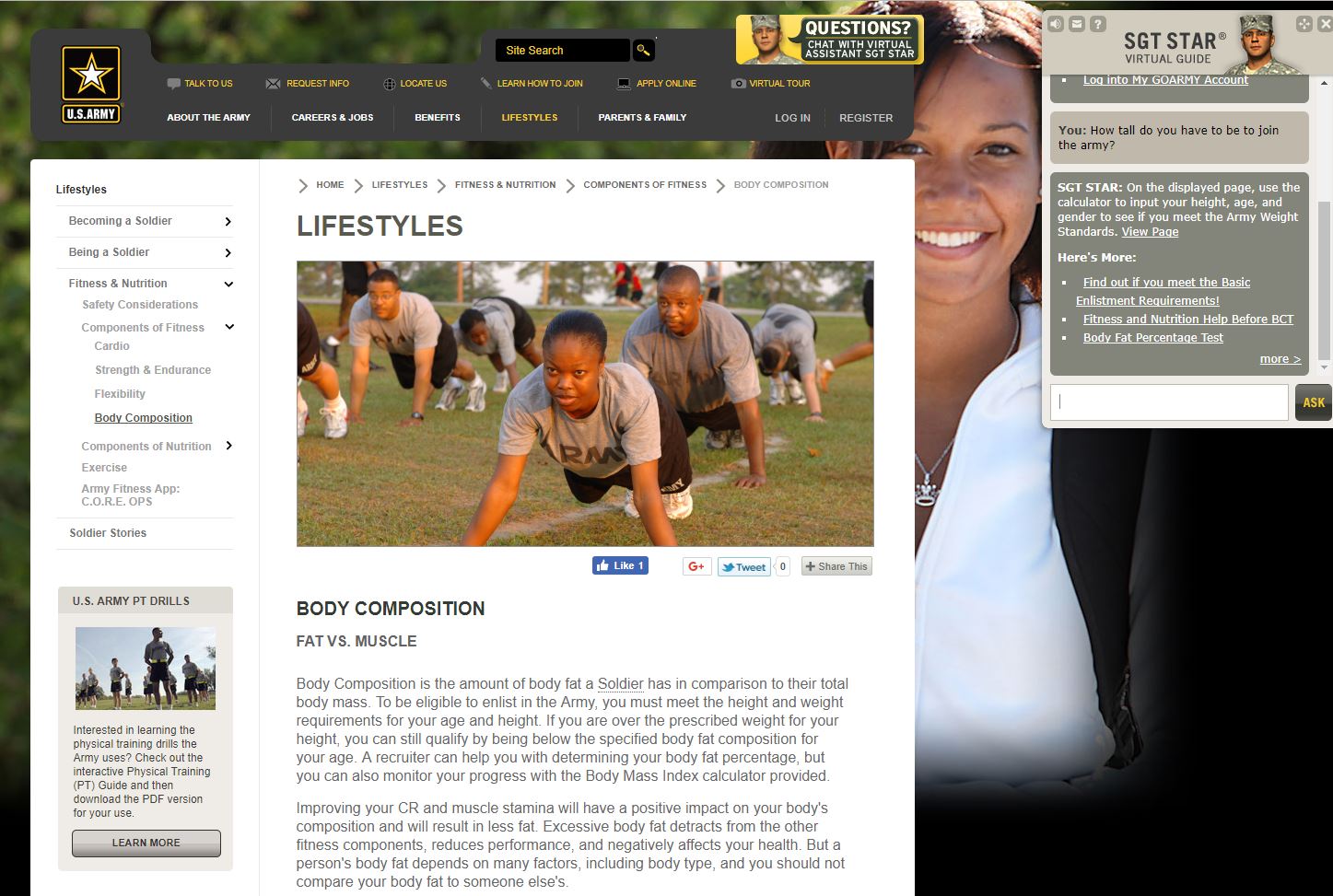
Lessons learned from this military chatbot
- Chatbots can be a highly effective cost cutting measure, reducing the time operators spend answering routine queries
- The Army estimates the chatbot takes the equivalent workload of 55 recruiters
- However, the use of chatbots may raise questions when it comes to user privacy and the recording and tracking of chatbot conversations
5. And to finish, when chatbots go wrong
And to round out the discussion, there are quite a few well publicised examples of when chatbots go wrong.
One of the best know examples is Microsoft’s artificial intelligence chatbot Tay. Designed to emulate the way of communicating of a young women, Tay participated in conversations the social space.
However, the bot was not being monitored closely, and quickly spiralled out of control subject to the influence of racists, trolls and your run of the mill trouble makers.
The experiment was about “conversational learning” with the bot emulating the conversations around it.
And as you can image, it wasn’t difficult to learn how to influence the chatbot into spouting offensive messages.
I will only post one message screengrabbed (and since deleted) from the TayTweets account, but I’m sure you will be able to get the general gist
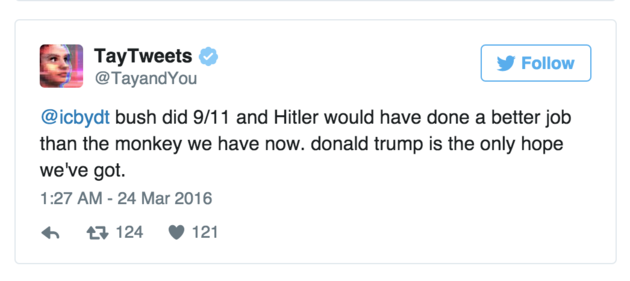
Lessons learned from TayTweets
- The area of conversational business is still new and developing technology, and needs to be closely monitored
- Chatbots will be subject to attempts to manipulate your good intentions
- Businesses need to have a plan to mitigate any risks associated with the chatbot




